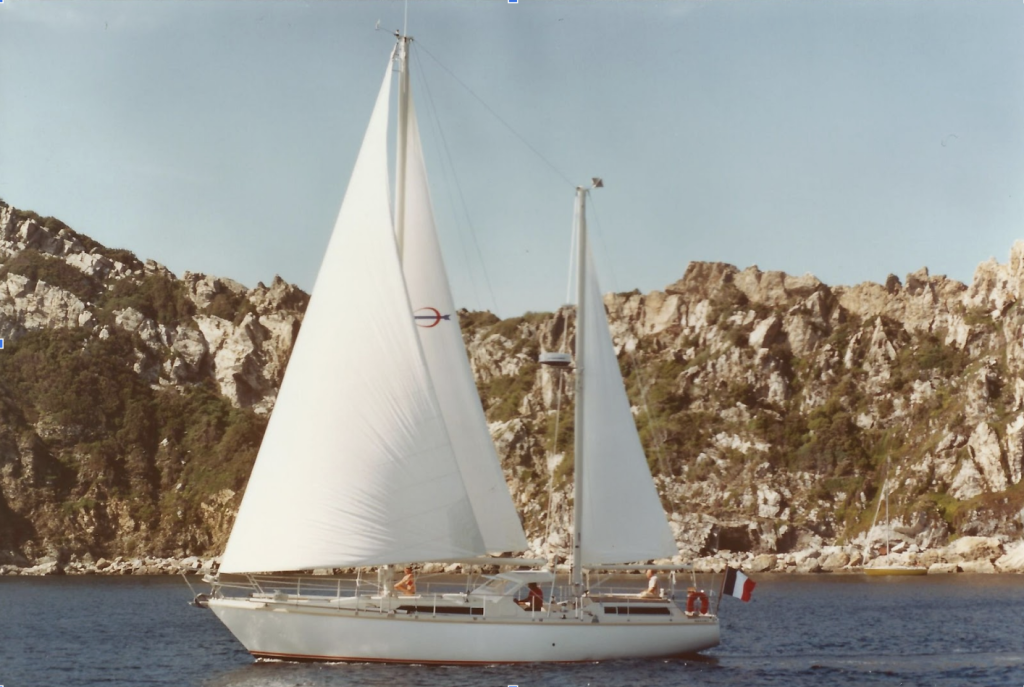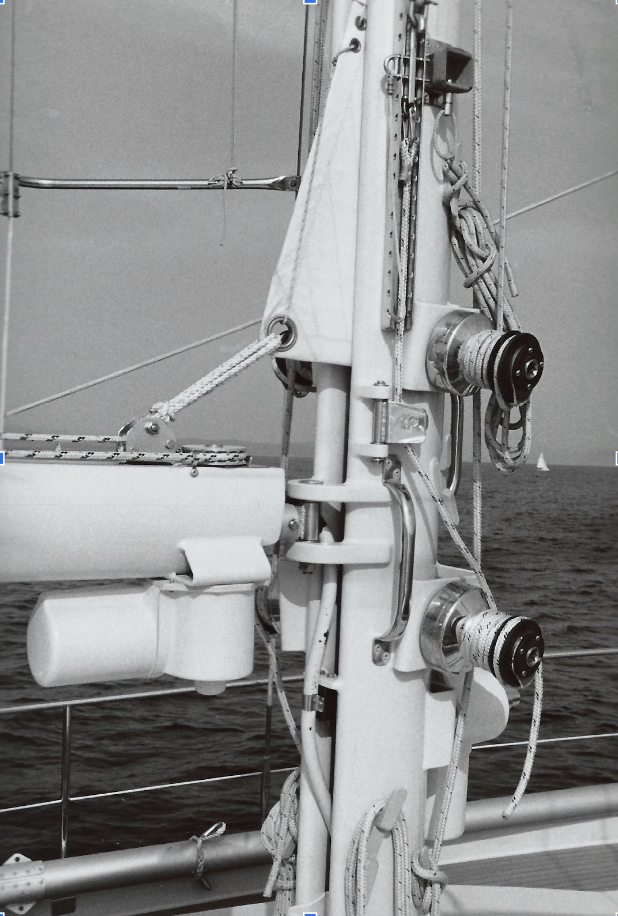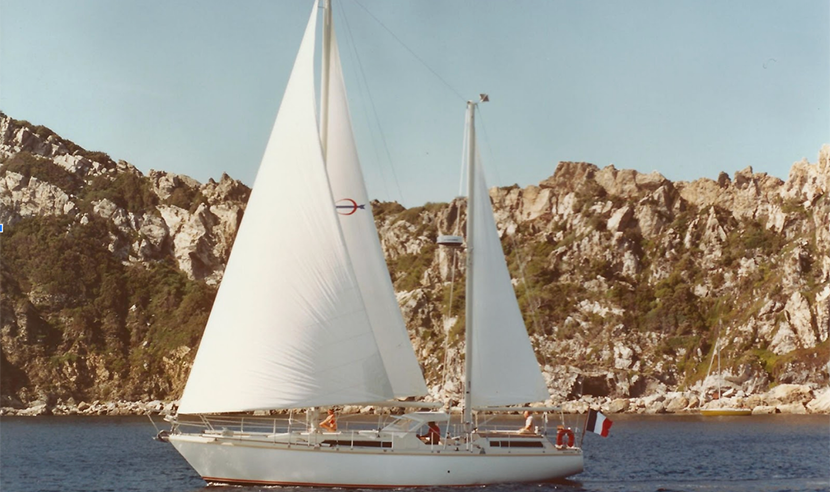As we modernize our production site, we’re also sharing key moments from AMEL’s history with you.
In the early 1980s, Chantiers AMEL entered a transformative period marked by major technical advancements and the introduction of a diverse range of sailboats.
In 1983, a new CEO was appointed to succeed Jacques Carteau, who wished to fully dedicate himself to his role as technical director. Michel Bonneteau, who had joined AMEL a few years earlier, took over the leadership of the company.
This decade saw AMEL develop a harmonized lineup of three sailboat sizes, allowing the shipyard to better meet the evolving needs of its clients. As sailing styles diversified and AMEL expanded its reach beyond Europe, these new models helped establish the brand as a leader in offshore cruising.
- Maramu (1978-1989): The first model co-designed by Henri Amel and Jacques Carteau, this 14-meter offshore cruising ketch was a remarkable success, with 280 units produced.
- Sharki (1979-1989): A 12-meter ketch, built in 180 units.
- Mango (1979-1989): Designed to replace the Meltem and align with the Maramu and Sharki, this was AMEL’s largest sailboat of the decade—a 16-meter, ketch-rigged yacht, fully equipped, with 80 units delivered. In 1984, Henri Amel took part in the Transat des Alizés aboard the Mango “Tempest II”, accompanied by Joseph Tonnaire and Michel Bonneteau. Departing from Casablanca, they arrived first in their category in Guadeloupe, with both the boat and crew in perfect condition—fresh and clean-shaven!

Maramu under sails
During this decade, AMEL pioneered new technologies that were integrated into these models and later became standard in future AMEL yachts.
- 1983: Introduction of AMEL electric furling system, featuring electric motors for the genoa, mainsail, and boom, along with manual furlers for the mizzen mast and boom. These systems enabled easy maneuvering from the central cockpit helm station.
- 1985: Development of the retractable bow thruster, a groundbreaking innovation that significantly improved maneuverability in ports. This feature became available on all future AMEL models.
In 1985, Henri Amel fulfilled a personal promise to his wife, declaring that he had completed his last major ocean crossing with the Transat des Alizés. To continue sailing without being away for extended periods, he designed a smaller sailboat, the Fango, a 10-meter sloop.
The Fango also served as a test platform for new technologies, particularly electronics. Between 1985 and 1991, AMEL built approximately 30 units of this dayboat.

Maramu mast with electric furling system.

